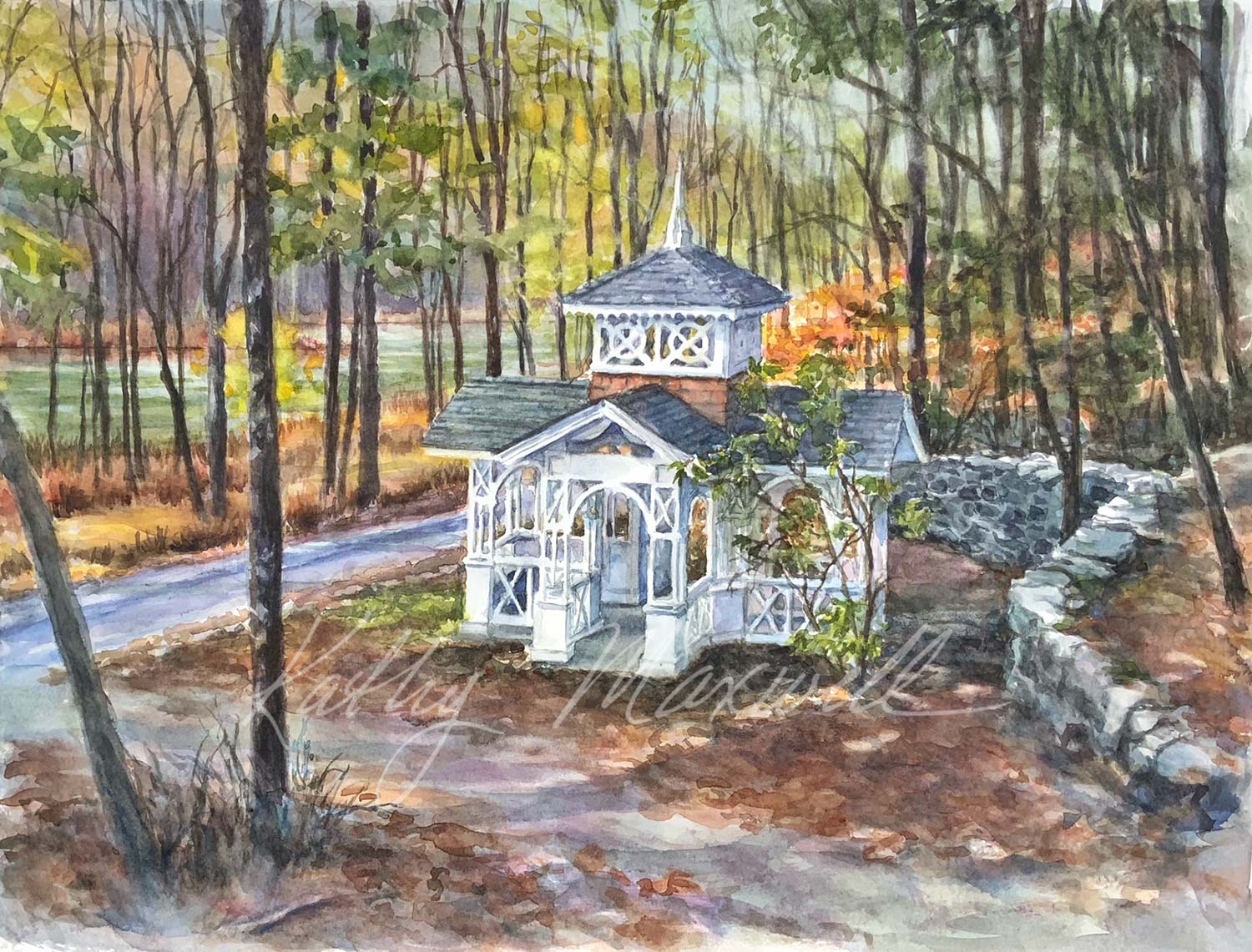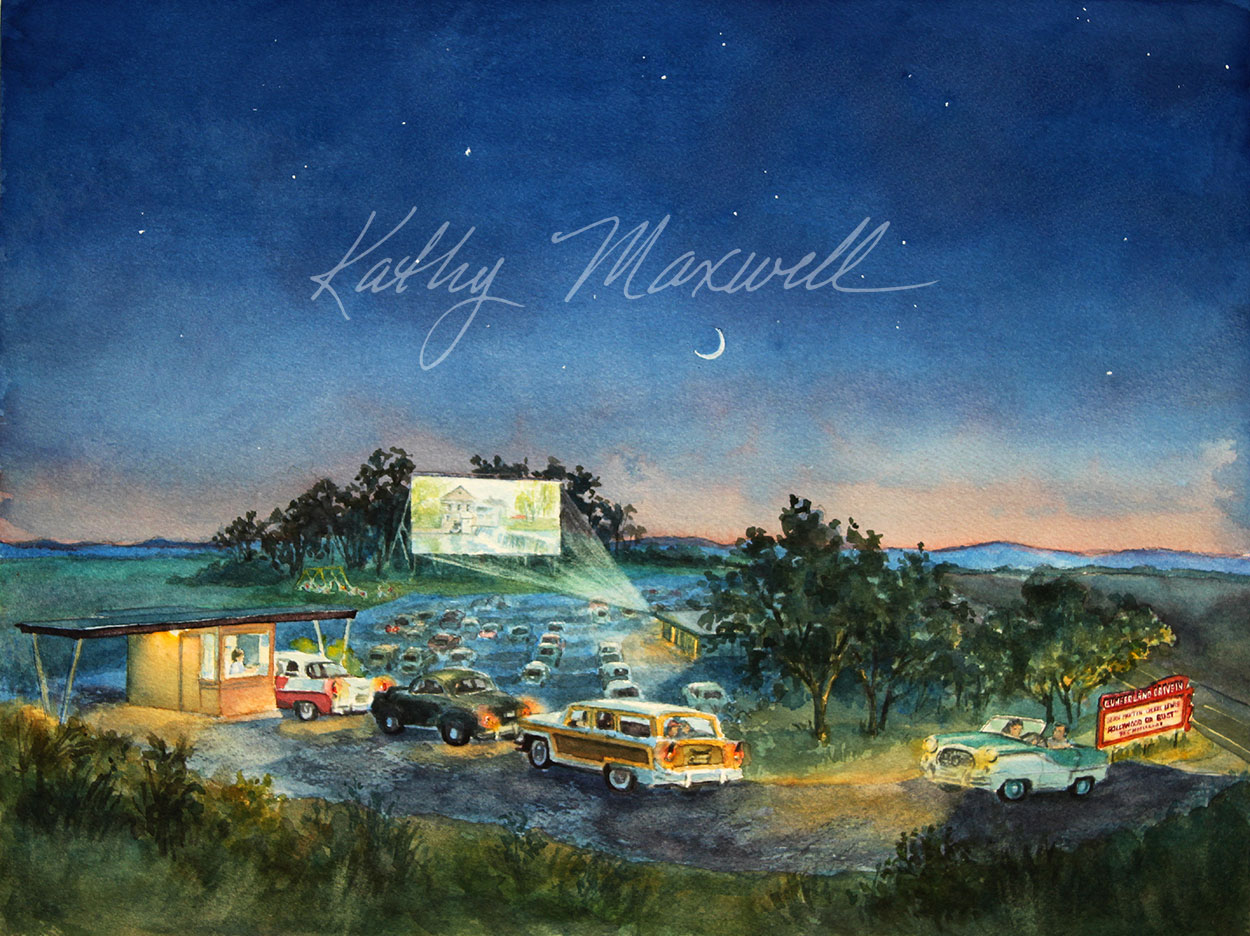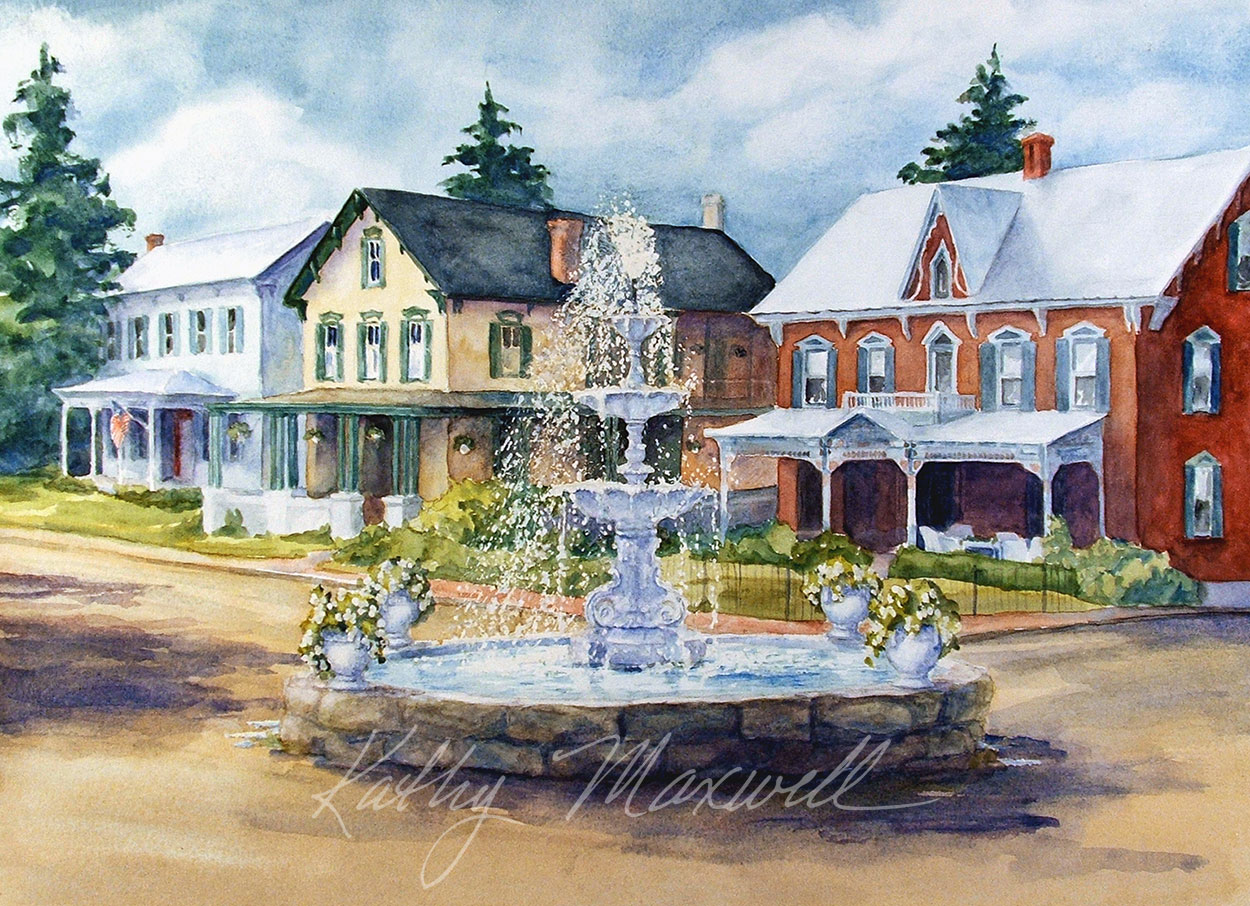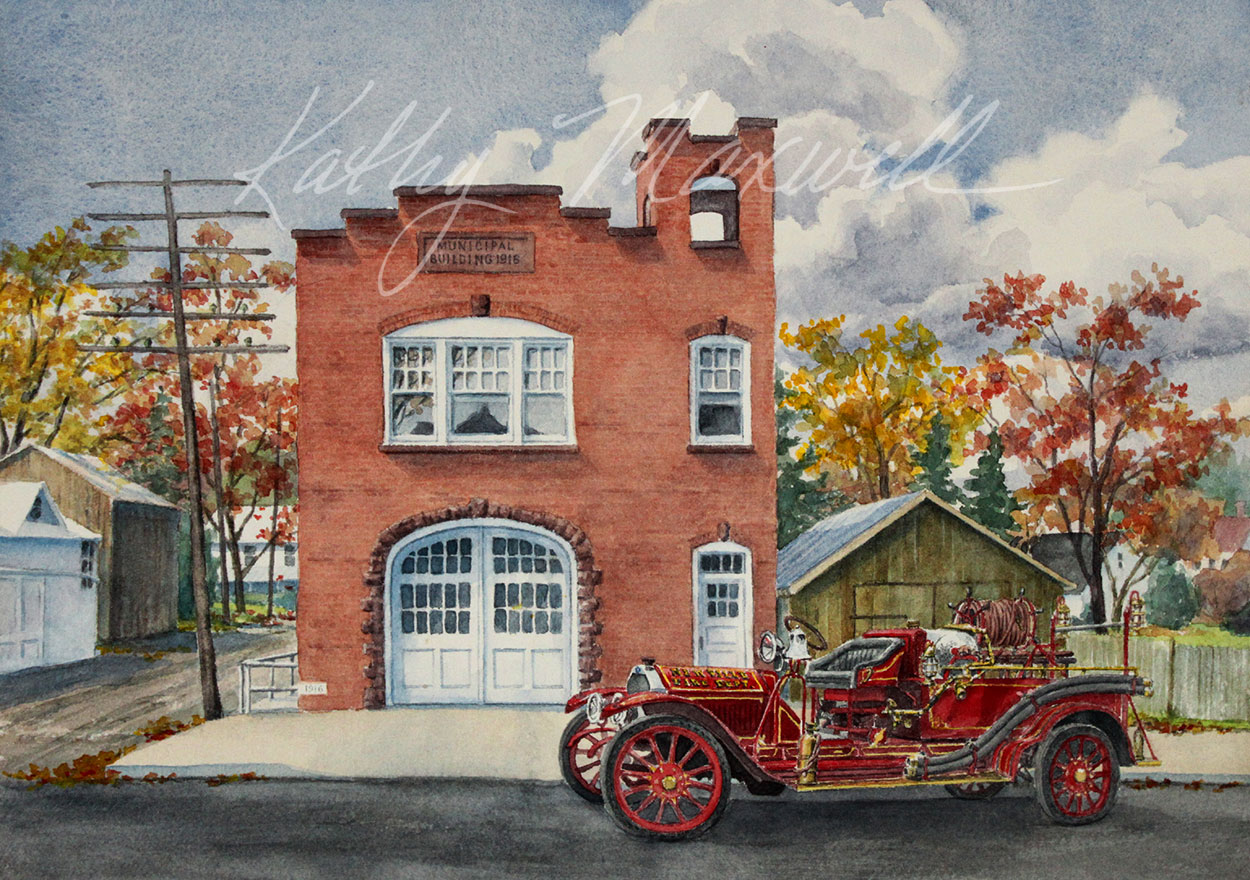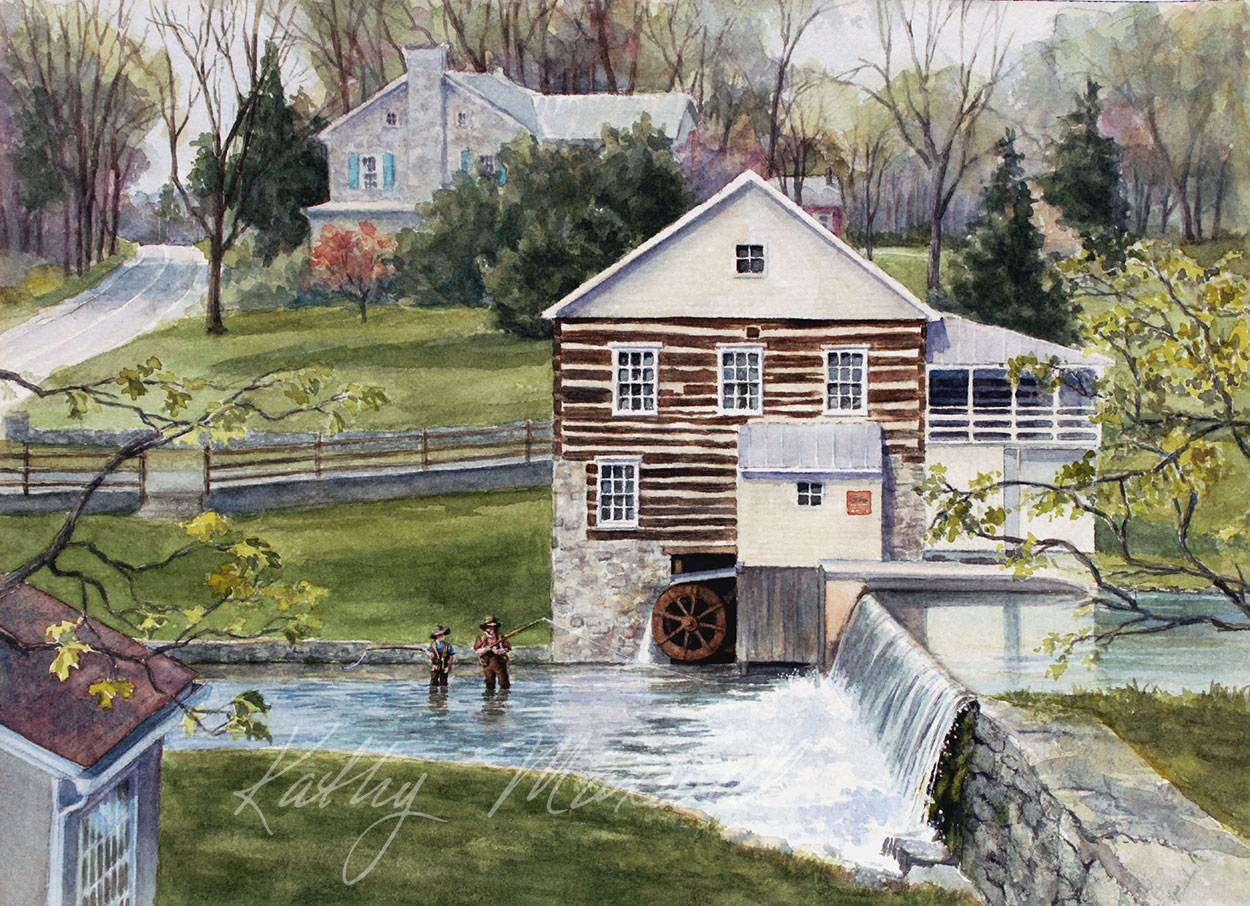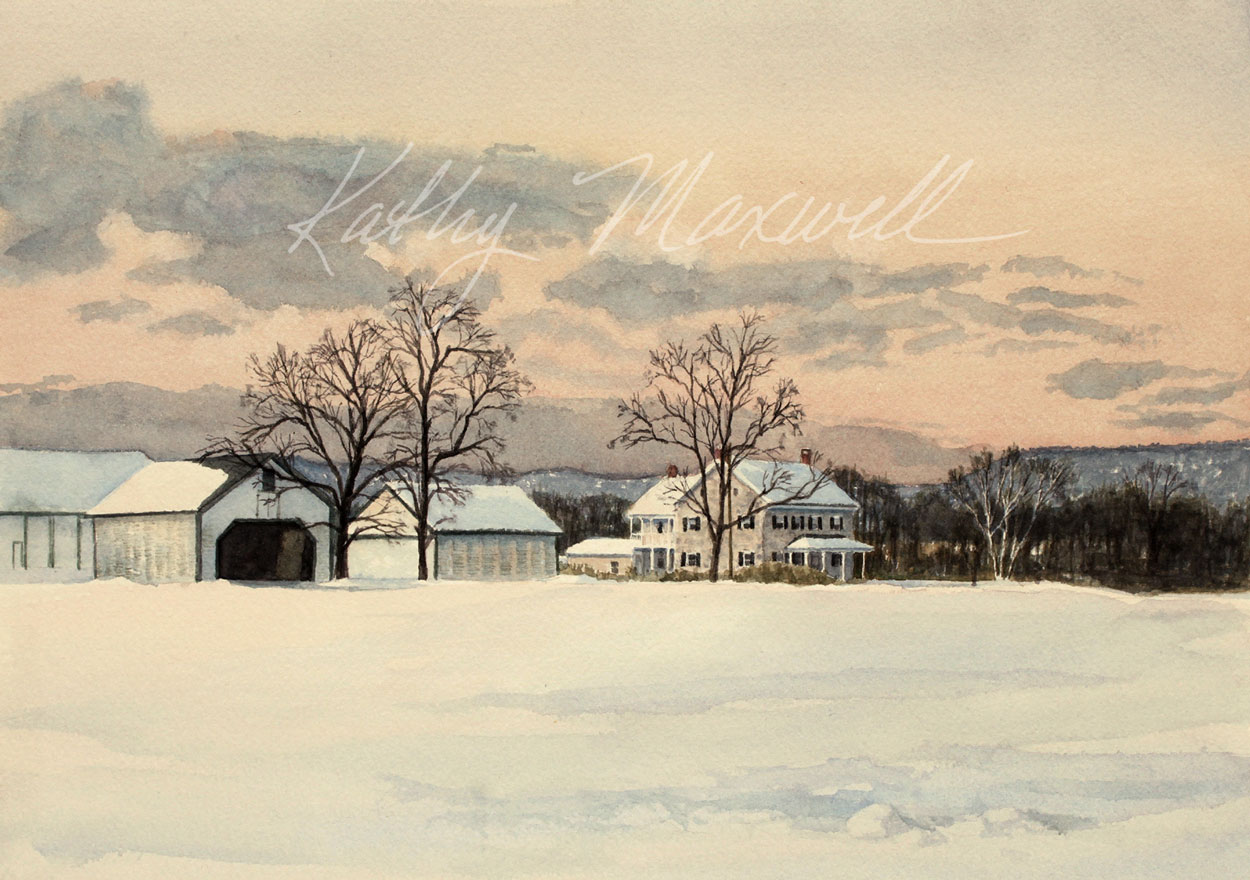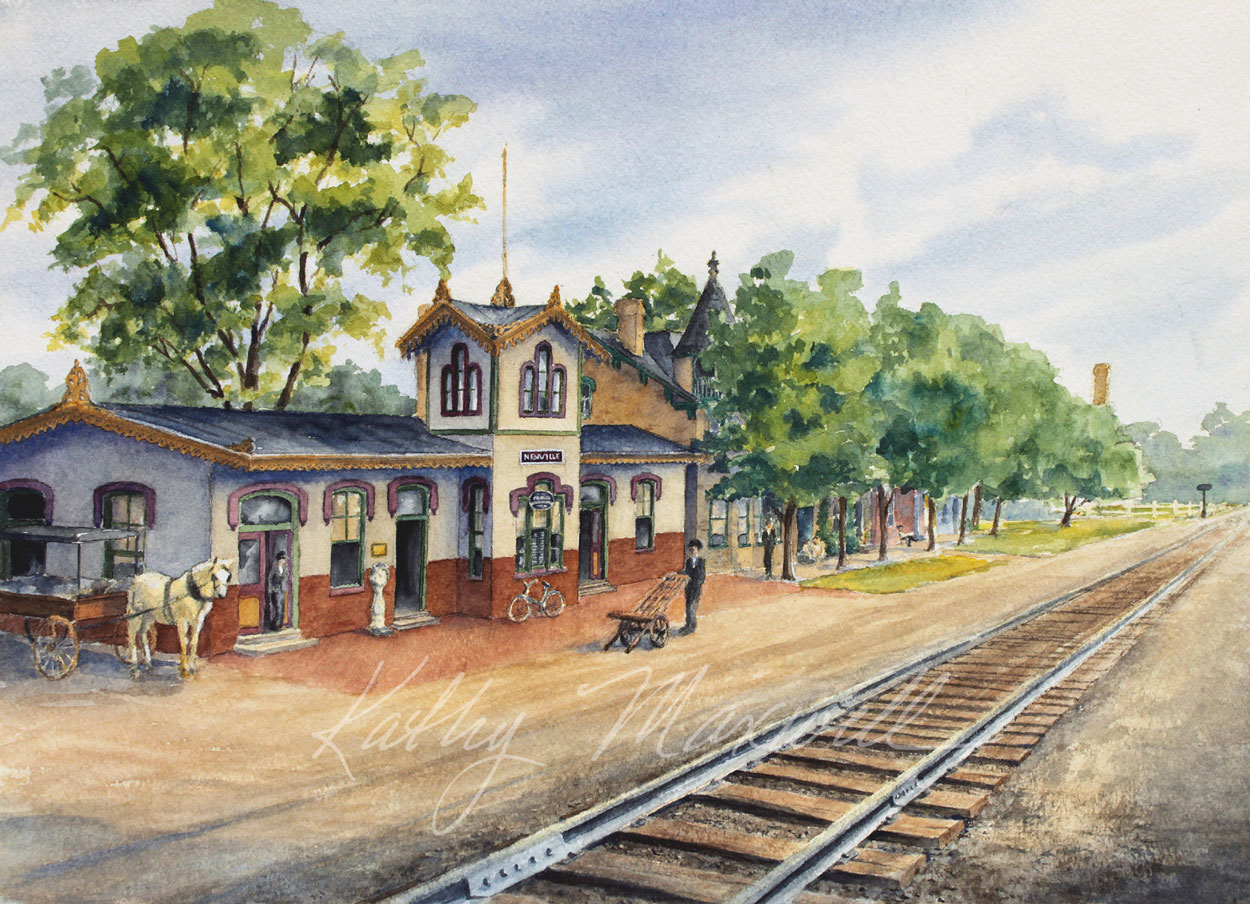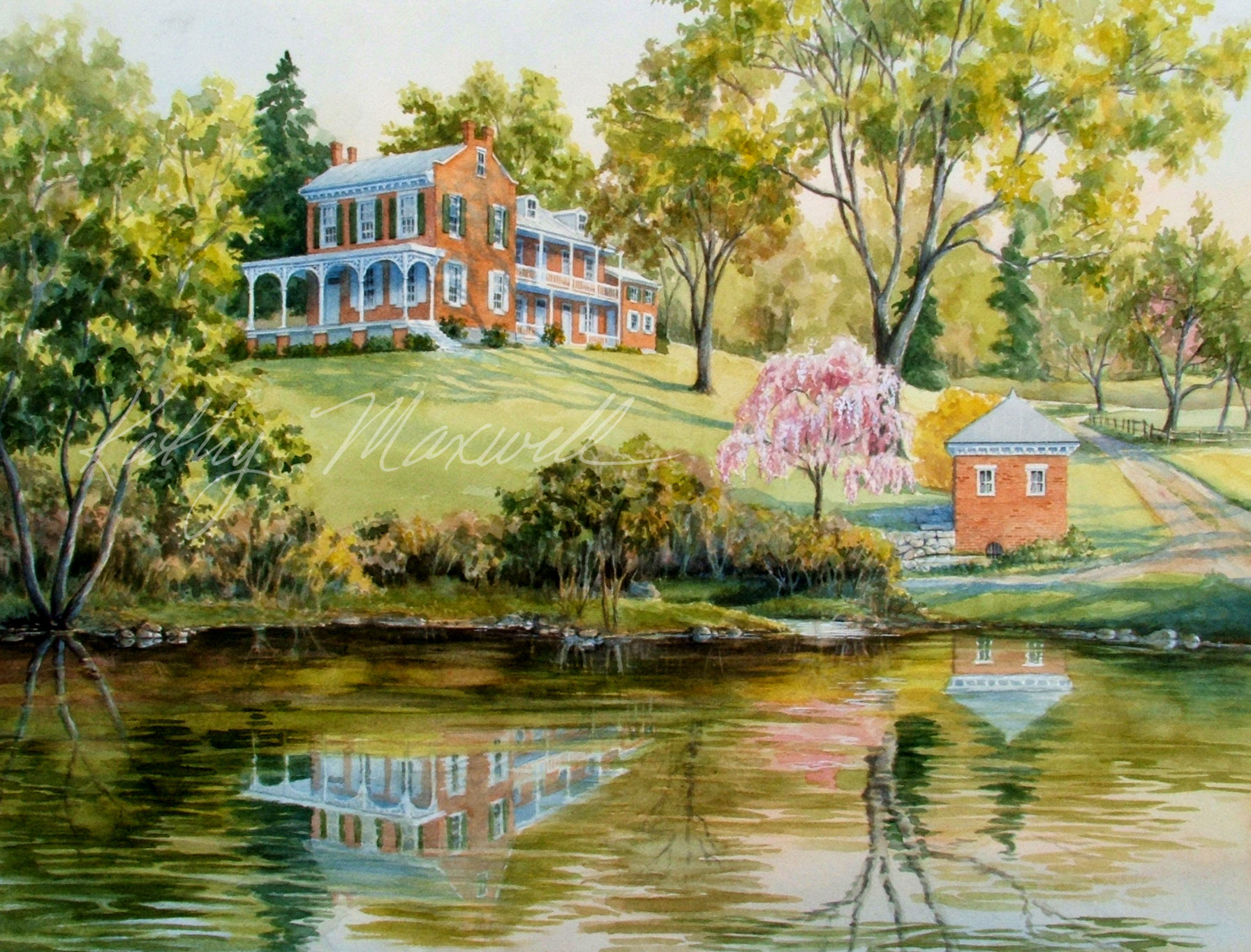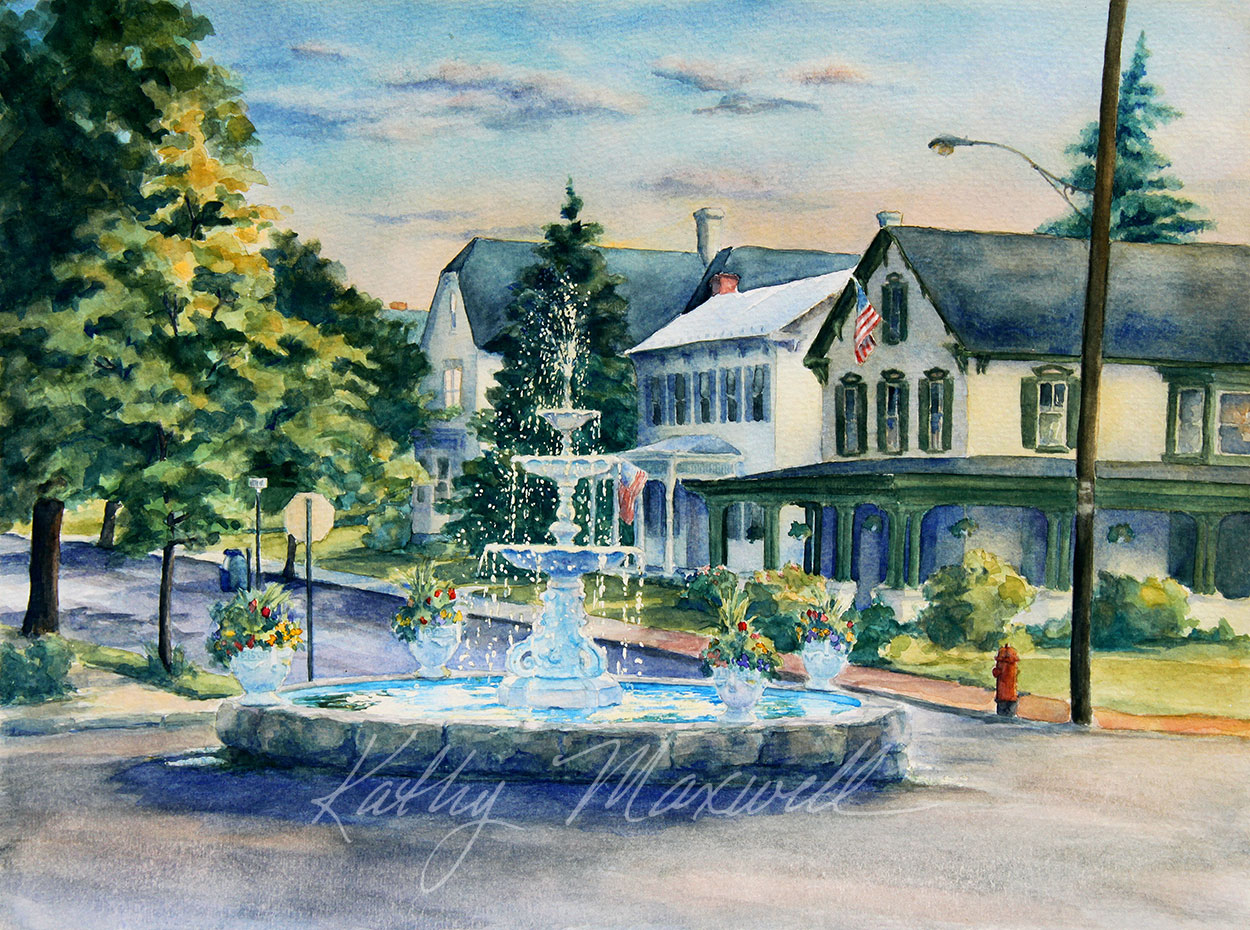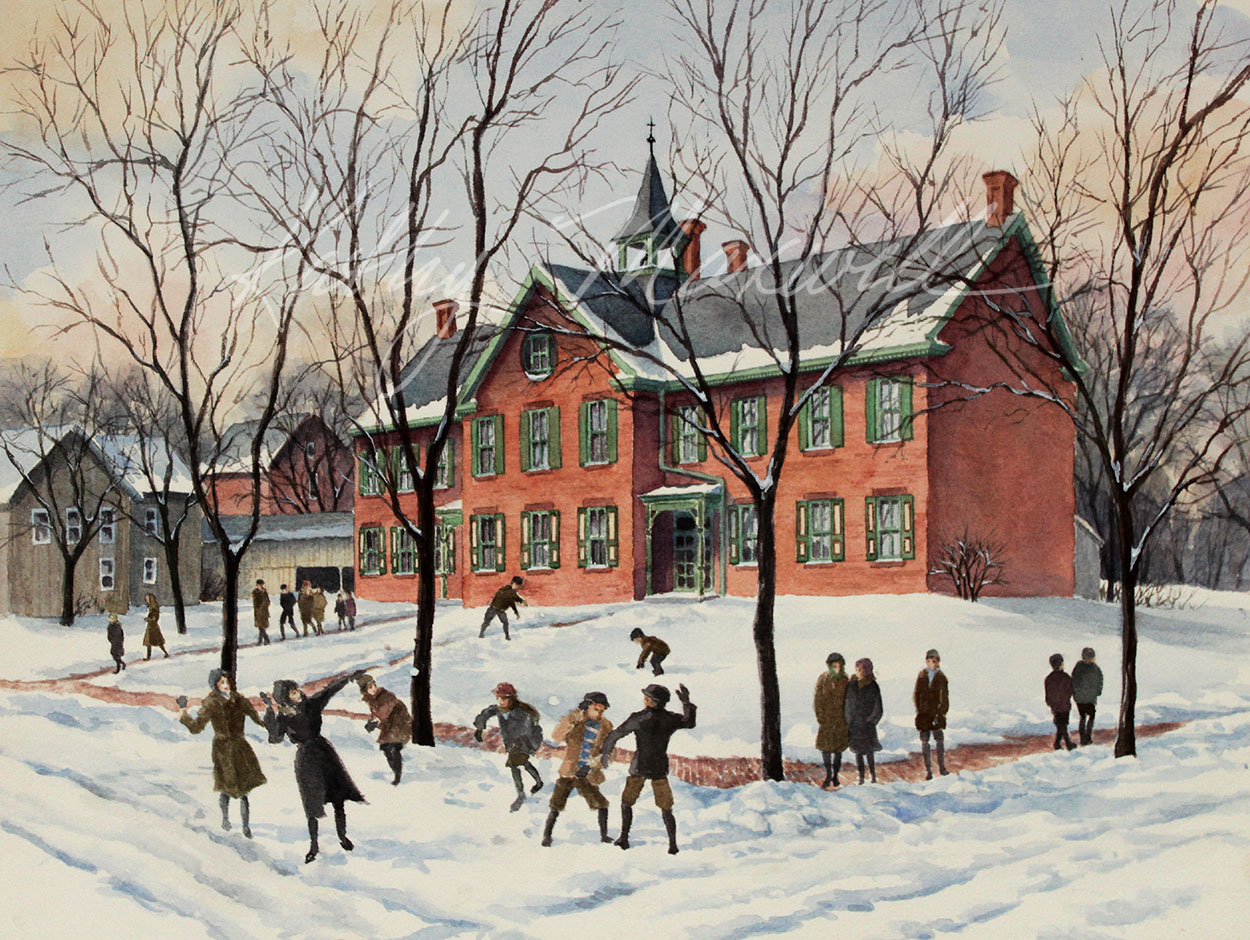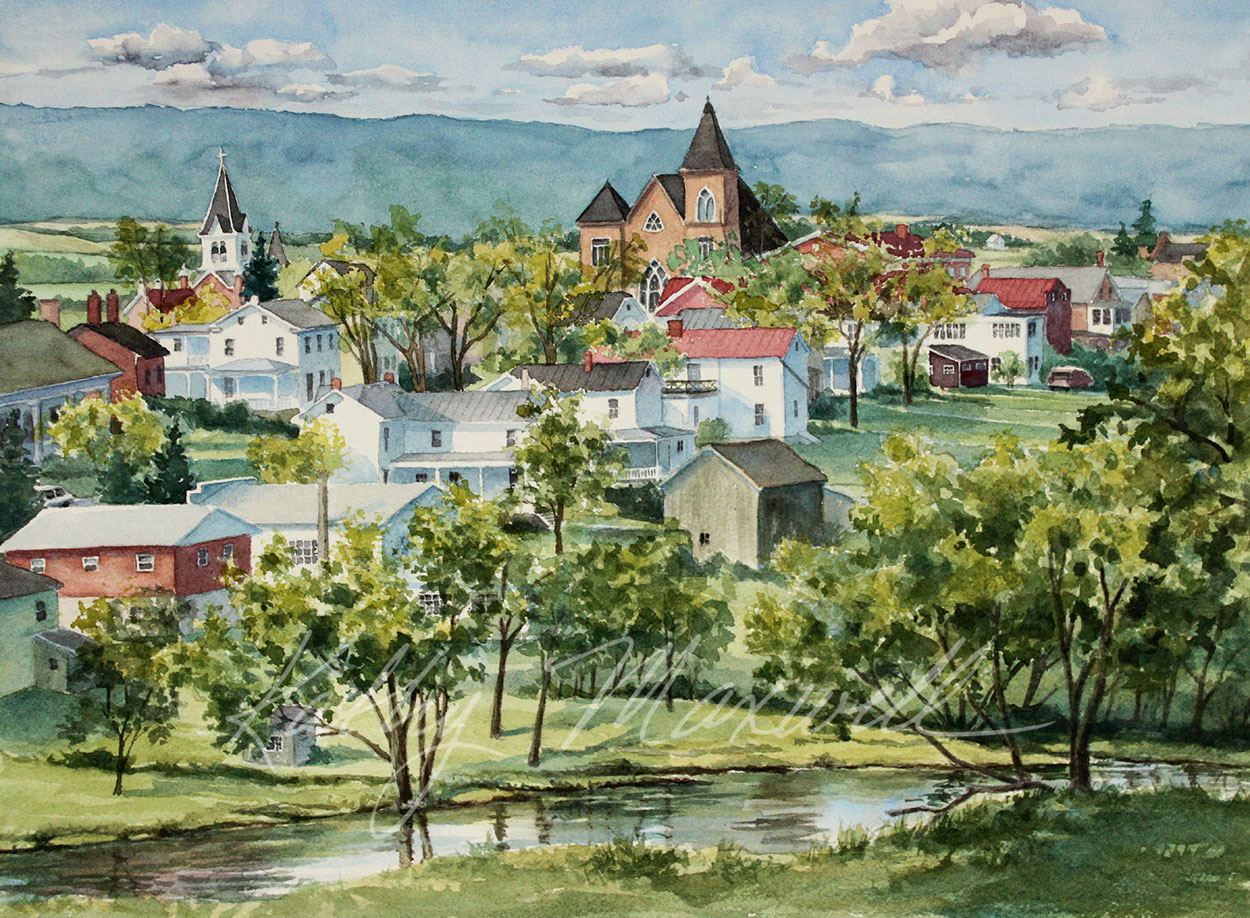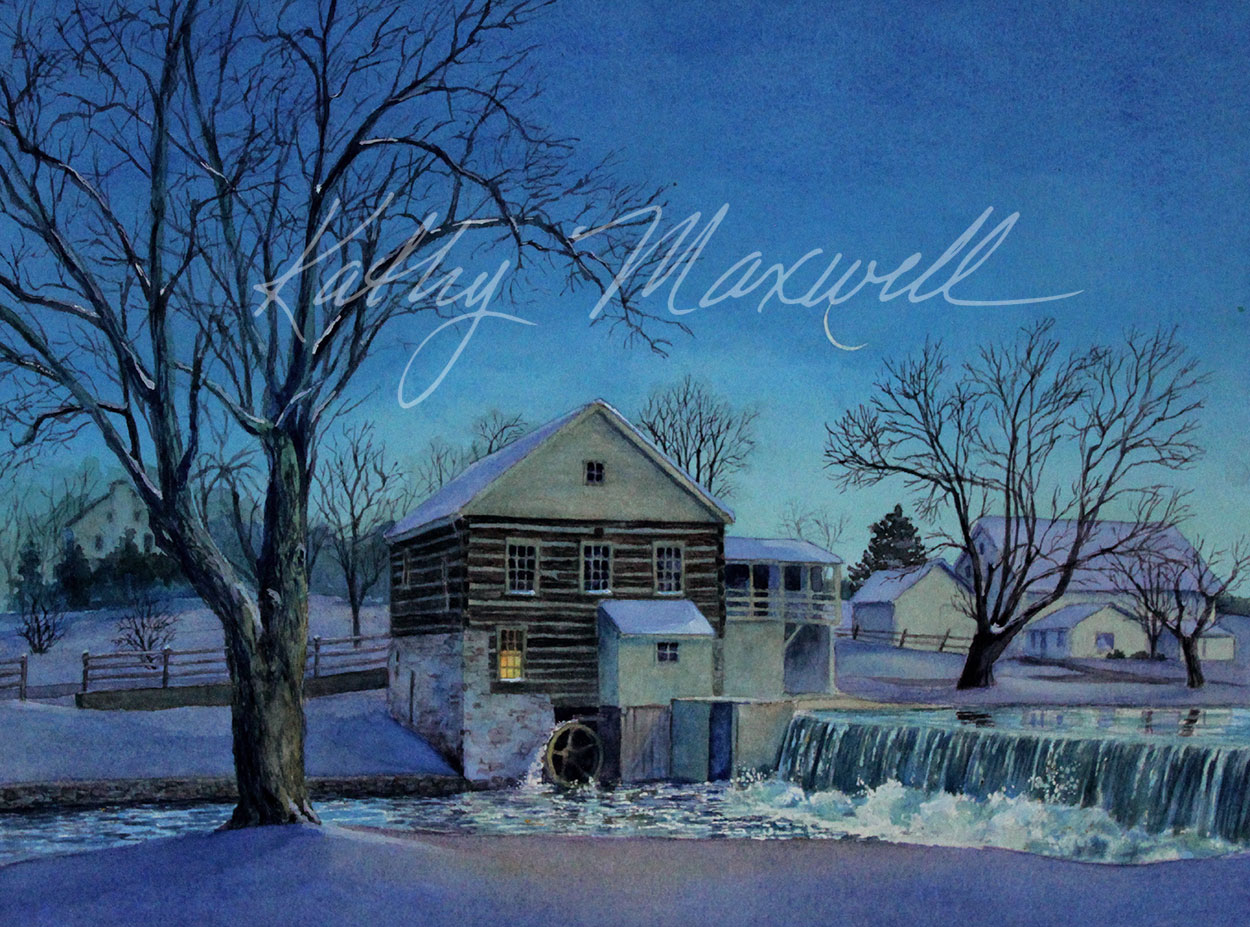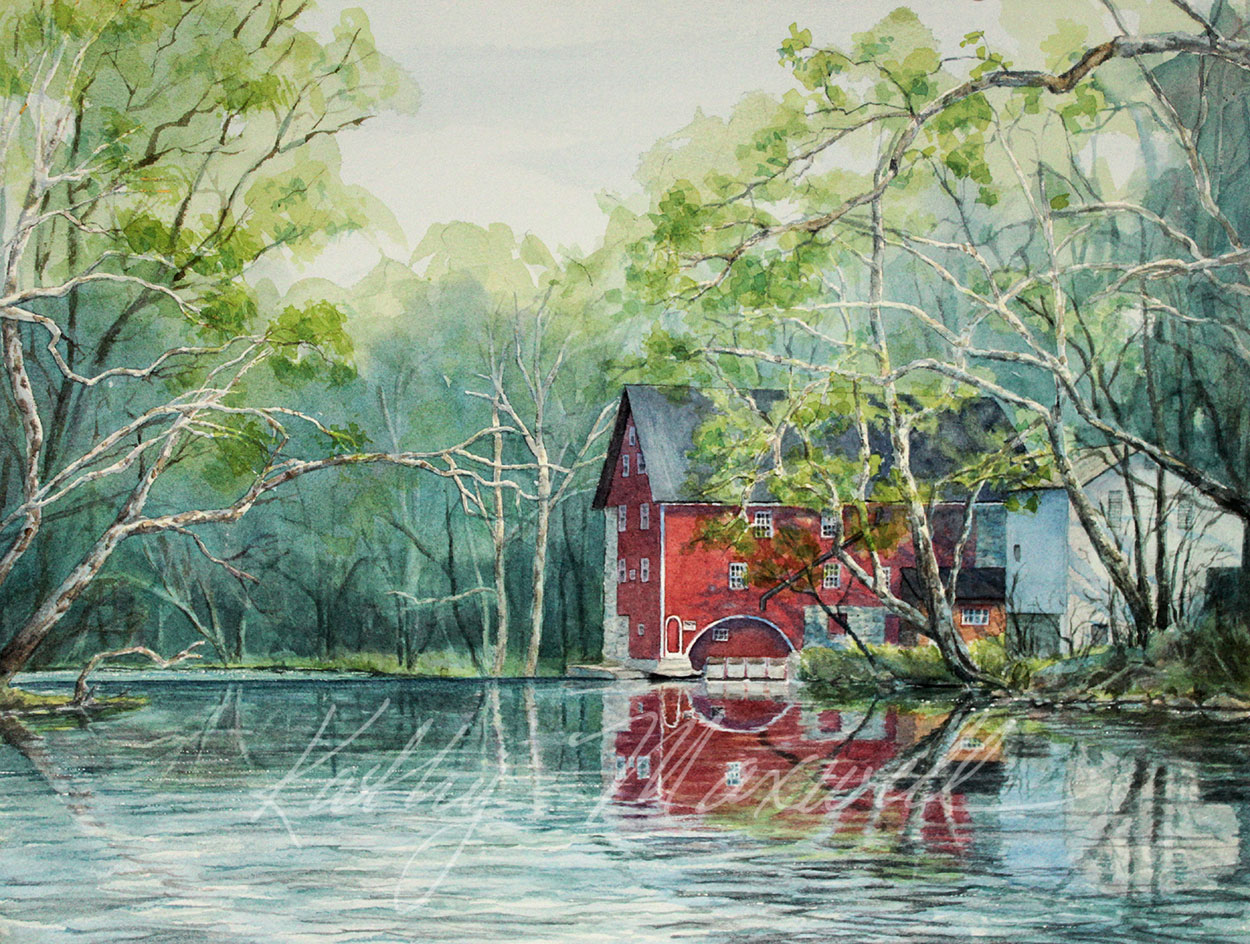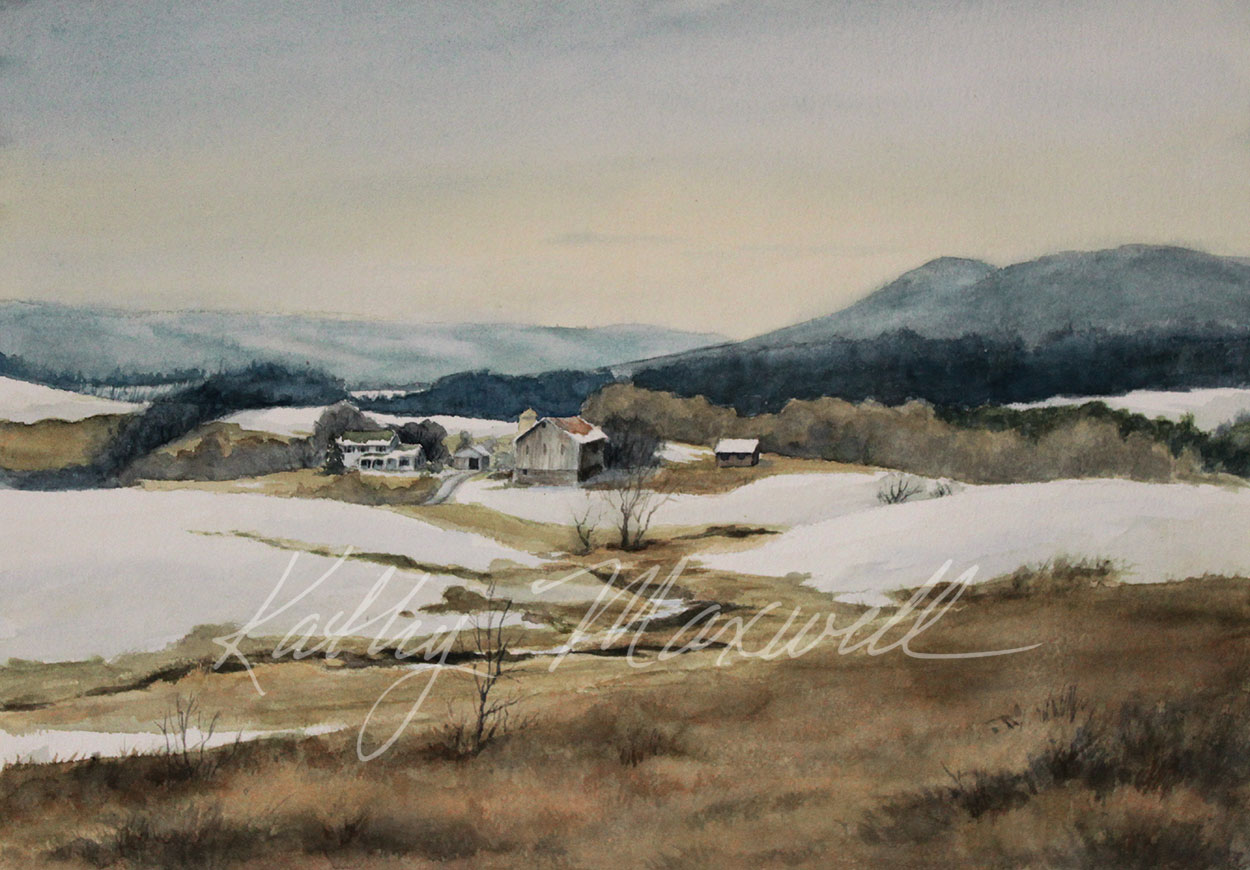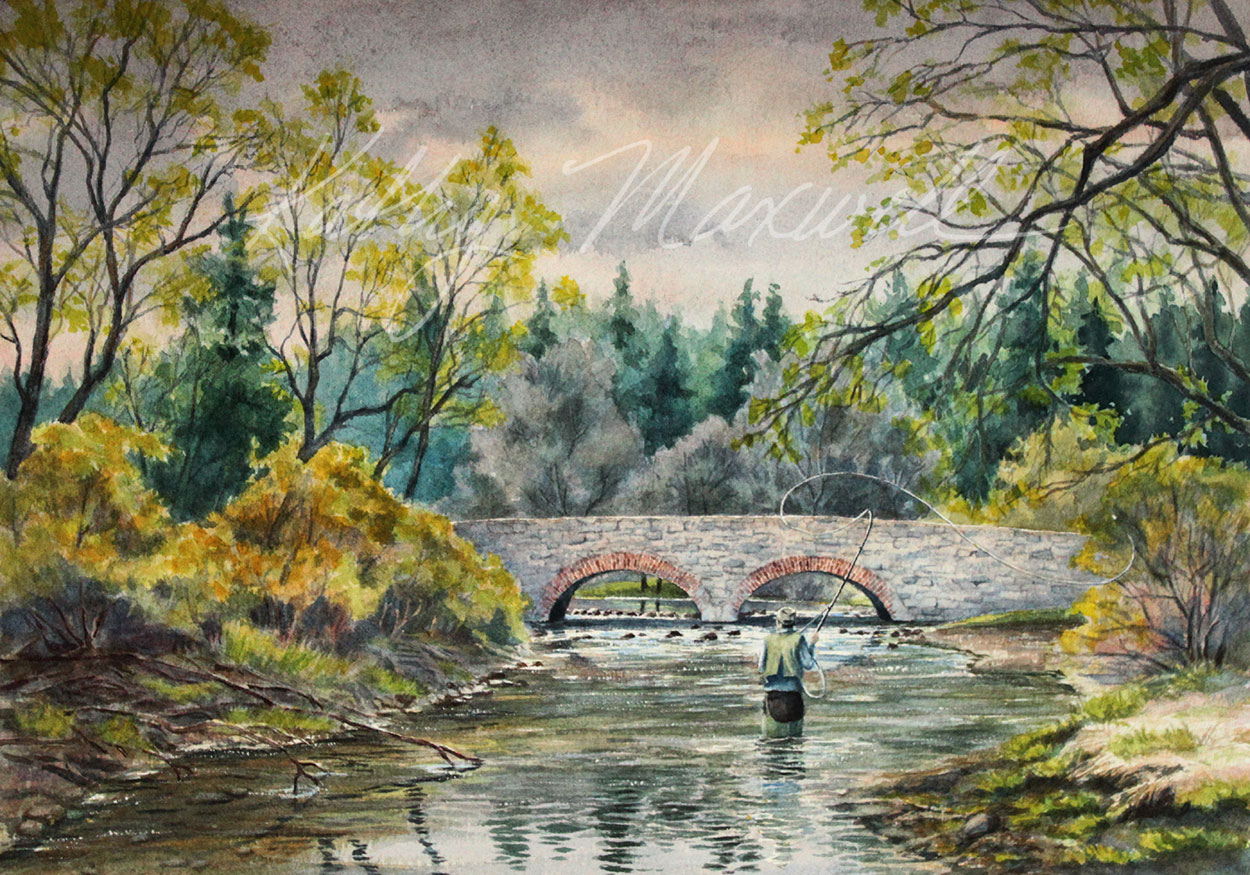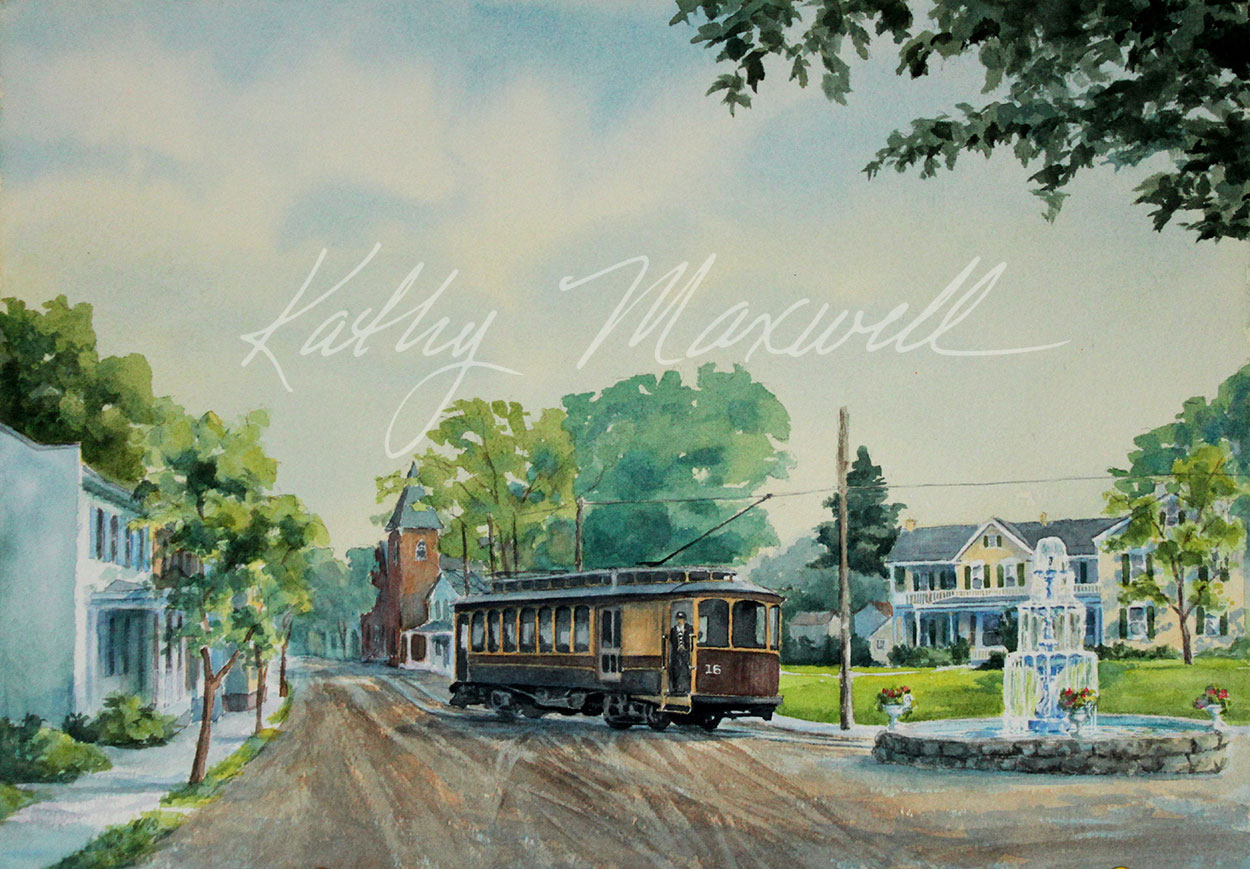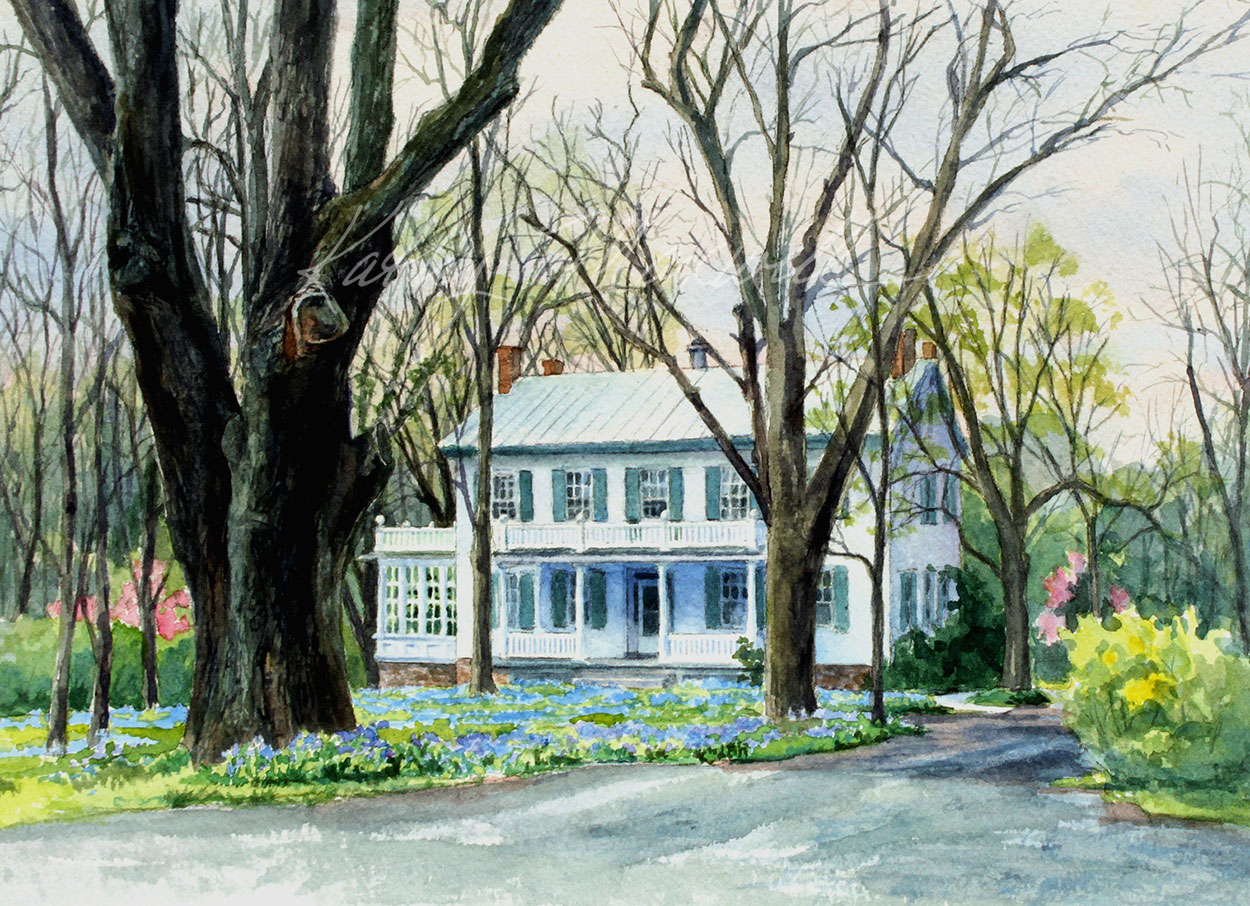The White Sulfur Springs near Colonel Denning State Park north of Newville, Pennsylvania has been a popular destination dating back to Native American days. Believers in the power of healing mineral spring waters have flocked to the area for centuries. The Doubling Gap Hotel was established around 1800 to meet the needs of those who traveled long miles to partake of the waters.
Early photos show women in long dresses and men in top hats with their pant legs rolled up, wading in little pools and streams that made their way down to the lake. The property contains numerous natural springs of varied mineral content bubbling up from underground, but not all of them were graced with such an elaborate springhouse as this one. When a falling tree recently destroyed this beautiful old springhouse, the owners of the present day Camp YoliJwa wished to preserve that bit of history and rebuilt it true to the original. I painted the springhouse in the fall, surrounded by leaf color, with nearby Lake Henriette peeking through the trees in the background.

